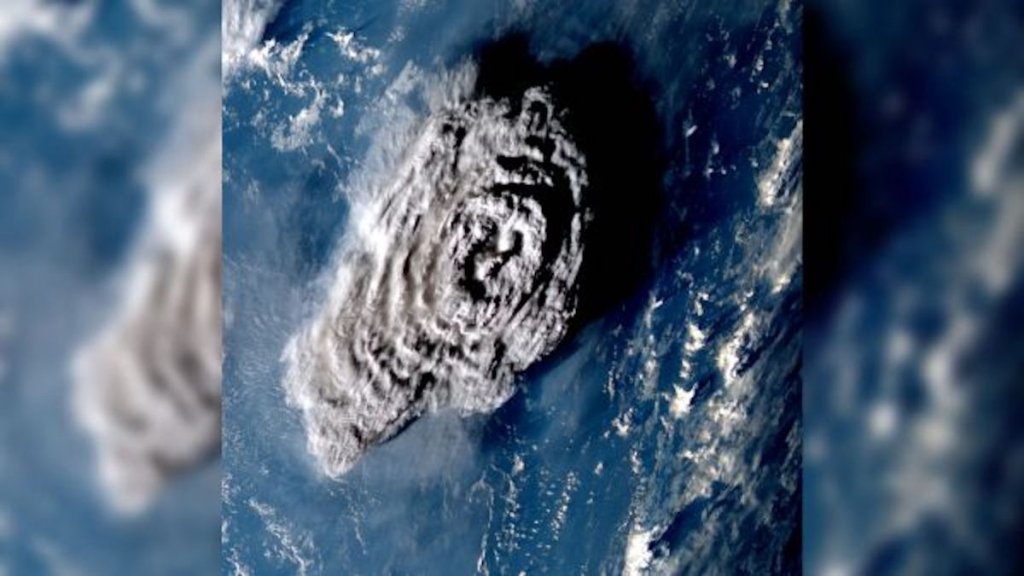An island near Tonga that emerged from the ocean in 2015 was teeming with unique life-forms, but the 21st century’s largest volcanic eruption completely obliterated it, a new study has revealed.
The Hunga Tonga-Hunga Ha’apai island emerged from the Pacific Ocean due to volcanic (opens in new tab) activity in 2014 and 2015. Its short, seven-year existence gave scientists a rare window to study how life develops on new land masses, until the devastating Tonga eruption in 2022 blasted it away.
And the scientists were surprised by what they found. Instead of the bacteria (opens in new tab) families that they expected would first colonize the island, the researchers found a weird group of microbes that likely came from deep underground. The researchers published their findings Jan. 11 in the journal mBio (opens in new tab).
Related: Scientists find deep-sea bacteria that are invisible to the human immune system (opens in new tab)
“We didn’t see what we were expecting,” Nick Dragone (opens in new tab), the lead study author and a doctoral student in the department of ecology and evolutionary biology at the University of Colorado, said in a statement (opens in new tab). “We thought we’d see organisms you find when a glacier retreats, or cyanobacteria, more typical early colonizer species — but instead we found a unique group of bacteria that metabolize sulfur and atmospheric gases.”
Hunga Tonga-Hunga Ha’apai, which was named after the two islands it sprouted up between, began forming underwater in December 2014 after the eruption of the Hunga Tonga-Hunga Ha’apai submarine volcano and emerged above the ocean’s surface in January 2015, eventually forming a 0.7-square-mile large (1.9 kilometers squared) island. According to the researchers, Hunga Tonga-Hunga Ha’apai was the third landmass in the last 150 years to appear and persist for more than a year, and the first in tropical regions — giving them a rare opportunity for further study.
To find which microbes were making the new island their home, the researchers collected 32 soil samples from various non-vegetated surfaces — ranging from sea level to the 394-foot-tall (120 meters) summit of the island’s crater — before extracting and analyzing the DNA (opens in new tab) found within.
Usually, scientists expect new islands to become populated with bacteria found in the ocean or in bird droppings. But the most prevalent bacteria around the volcano’s cone were those that chowed down on sulfur and hydrogen sulfide gas; and they may have drifted to the island’s surface through underground volcanic networks. Of the top 100 bacteria picked up by the sequencing, the researchers were unable to classify 40% into a known bacterial family.
—11 biggest volcanic eruptions in history (opens in new tab)
—Where are most of Earth’s volcanoes? (opens in new tab)
—10 times volcanoes blew our minds in 2021 (opens in new tab)
“One of the reasons why we think we see these unique microbes is because of the properties associated with volcanic eruptions: lots of sulfur and hydrogen sulfide gas, which are likely fueling the unique taxa we found,” Dragone said in the statement. “The microbes were most similar to those found in hydrothermal vents, hot springs like Yellowstone, and other volcanic systems. Our best guess is the microbes came from those types of sources.”
Eventually, the volcano that had birthed the island also became its destroyer. On Jan. 15, 2022, Hunga Tonga-Hunga Ha’apai volcano erupted again, exploding with a force greater than 100 simultaneous Hiroshima bombs (opens in new tab) to send a column of ash, island chunks and steam halfway into space.
The eruption ended the researchers’ studies into the island, but the short-lived landmass gave scientists a blueprint for future research.
“We were all expecting the island to stay. In fact, the week before the island exploded we were starting to plan a return trip,” Dragone said. “We are of course disappointed that the island is gone, but now we have a lot of predictions about what happens when islands form. If something formed again, we would love to go there and collect more data. We would have a game plan of how to study it.”

